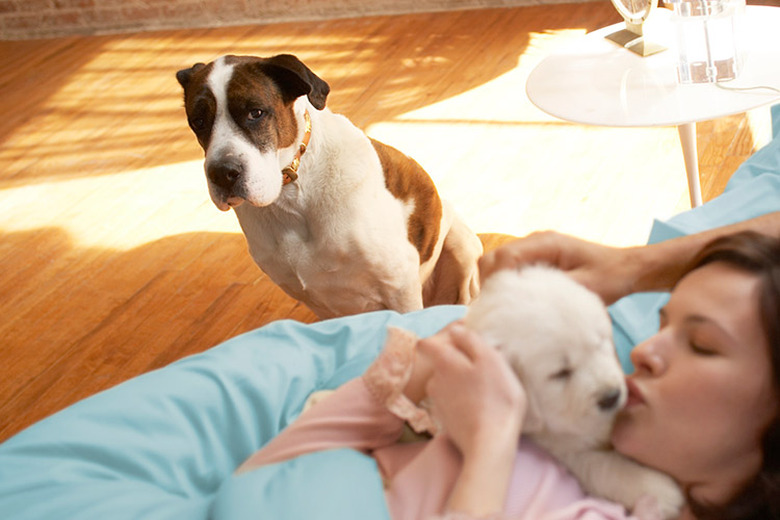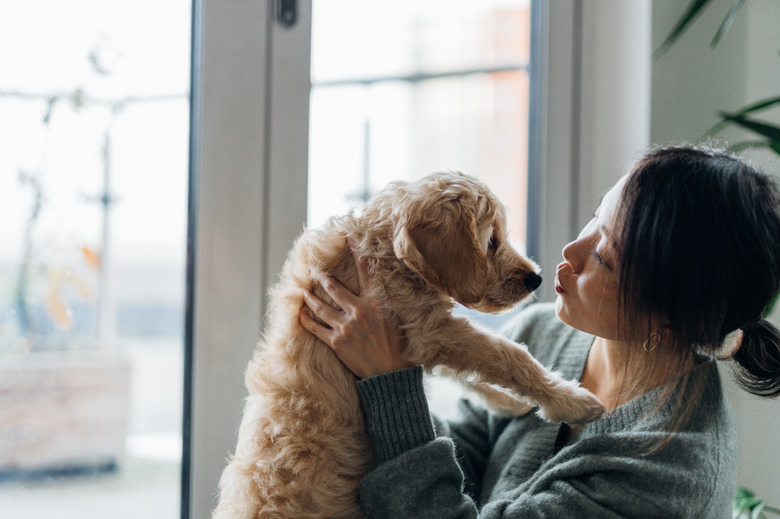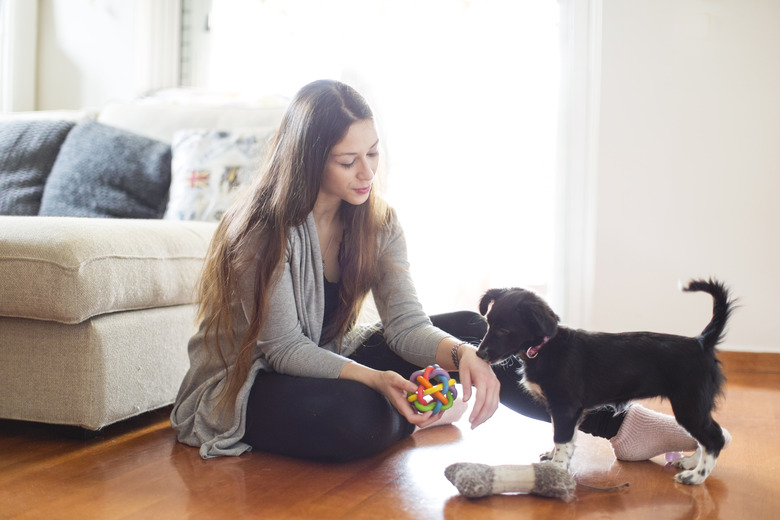Is It Ok For A Dog To Growl At A New Puppy?
You never know until you bring home a new puppy how your adult dog will react. Some adult dogs take to a new puppy right away, and others show their territorial side by barking and growling, which can be OK if you are there to supervise and ensure no one gets hurt.
During initial introductions, growls may be exchanged, which is considered normal. However, things can escalate quickly depending on the situation and the temperament of the dogs. Even if your adult dog doesn't actually go as far as to bite the little guy, that doesn't automatically mean everything's good between the dogs. Ensure your new pup and your existing one have a smooth introduction.
Dog growls at new puppy
Dog growls at new puppy
Puppies are still learning what constitutes proper canine behaviors and may rambunctiously greet your existing dog in a way that goes against acceptable canine etiquette. Barking and growling are the warning signals your adult dog will give to show the newcomer who is boss and what the limits are. A growl or a snarl without a nip is normal and is simply your dog teaching the newcomer the ropes.
If both dogs have their tails wagging and seem to be enjoying themselves, then that's a good sign. However, if your adult dog shows other signals, like baring his teeth, an intense or displeased stare, or raised hackles, that likely means that something more serious — such as a nip or a serious bite — is about to come. When you see this happen, it's time to separate the dogs.
My dog snaps at puppies
My dog snaps at puppies
Usually a dog of any age knows enough to back off and move away if another dog gives her the verbal and posturing warnings, but don't risk allowing your puppy to be harmed if your adult dog shows aggressive signs that precede an attack or if she has a history of aggression toward other dogs. Distract the older dog to redirect her attention and then have another person remove the puppy from the situation.
Most importantly, never scold either dog for growling or barking at each other. Not only does this create a negative association for each dog with the presence of the other but it also teaches the dog to skip over these warning behaviors and go right for the attack in the future. Instead, simply separate the dogs calmly.
Introducing a new puppy to a dog
Introducing a new puppy to a dog
For best results, introduce a new puppy to your adult dog in neutral territory, like outside in the garden or even at a park away from the house. You could even let them meet for the first time on opposite sides of a chain-link fence. If they are meeting face to face, your dog should be leashed initially while the puppy approaches him for the first time.
The older dog may growl, especially if the pup is too rambunctious, but if he shows no other aggressive signs, you can let him off the leash. Continue to supervise their interactions and remember to reward good, nonaggressive behavior with praise and treats.
At night, it's wise to crate or otherwise separate the pup from the adult dog to prevent any late-night fighting that could erupt if the puppy makes a nuisance of himself without you around. Be sure to remove any toys and food that could lead to a conflict between the two dogs.
Testing out the relationship
Testing out the relationship
You'll do your adult dog, the puppy, and yourself a favor if you take the time to introduce the two pooches before adopting the youngster. In general, dogs can usually learn to get along, and even if they never become best friends, they typically find their places in the family.
There are times, though, when a personality clash is severe enough that the two will never get along. In those cases, the constant fighting and continual danger of harming one another can make for a long 10 years or however long they both live with you. Do a test run to see how compatible they are and get an idea of how easy it might be to bring the puppy into your home.


